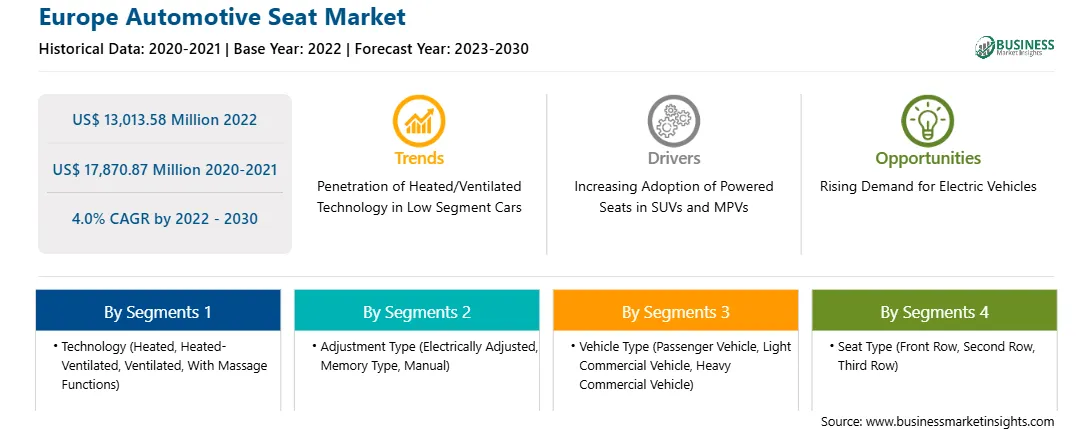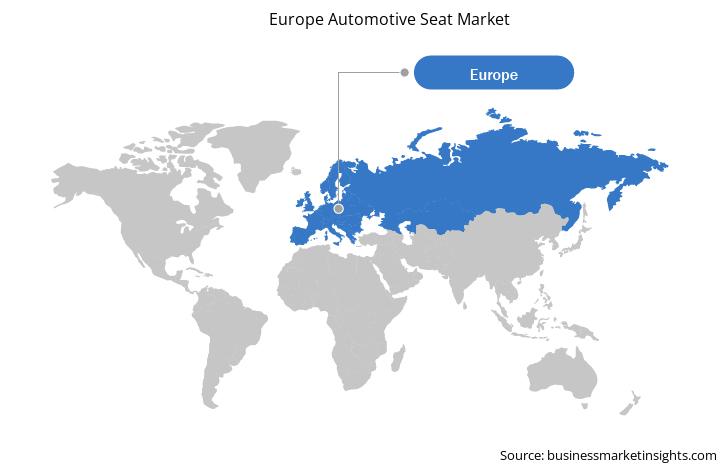The comfort of passengers and driver is a must to enhance safety and avoid accidents. This has led to the introduction of heated/ventilated technology in seats. The advantages of this technology in vehicles can be significantly experienced while travelling in extreme weather conditions. The heated/ventilated seats play an important role in ensuring optimal seat temperature. Ventilated seats are equipped with vents or small fans for forced air circulation, which helps in providing an immediate cooling effect. Heated seats are equipped with internal thermostats to maintain seat temperature. Although advanced technologies are widely adopted in high-end cars, they are likely to be introduced in low segment cars in the near future due to the growing demand. As air conditioners consume energy from the engine for its operation, it reduces fuel efficiency by 21–24% and increases carbon emissions by 120%. This could increase the expense of people using low segment cars. With the inclusion of heated/ventilated seats in low segment cars, significant fuel cost can be saved. Therefore, the penetration of heated/ventilated technology in low segment cars is anticipated to provide lucrative opportunities for the Europe automotive seat market during the forecast period.
The Europe automotive seat market is segmented into Germany, Italy, France, the UK, Russia, and the Rest of Europe. The European Commission has taken several initiatives to develop the automotive industry in the region. Further, the national regulatory bodies are taking numerous initiatives to support the development of the automotive industry in the region. For instance, CARS 2020 Action Plan, GEAR 2030, and Horizon 2020 are a few major European government initiatives augmenting vehicle production in the region. The Horizon 2020 Plan focuses on providing funds for research & development (R&D) activities in the automotive industry by launching programs such as the European Green Vehicles Initiative for smart mobility, road transport, and logistics. In March 2022, Ford planned to introduce three new electric passenger vehicles and four new electric commercial vehicles in Europe by 2024; the company plans to sell more than 600,000 electric vehicles in the region by 2026. Therefore, the presence of a robust automotive industry helps boost the demand for automobiles, further driving the Europe automotive seat market. The rise in disposable income has contributed to the robust consumer buying power. For instance, according to the Office of National Statistics, the UK’s median household disposable income increased by an average of 0.7% per year between 2020 and 2022. The growing consumer preference for the adoption of comfortable vehicles for family and friends for weekend getaways and tours contributes to the Europe automotive seat market growth in Europe. In addition, market players in the region are expanding their business worldwide to gain a competitive advantage over the other market players. For instance, in October 2020, Germany-based RECARO Holding GmbH expanded its business in North America by opening an advanced development and production facility in the region. Thus, business expansion helps the market players reach more customers, fuels their revenue growth, and drives the Europe automotive seat market.
The Europe automotive seat market is segmented into technology, adjustment type, vehicle type, seat type, and country.
Based on technology, the Europe automotive seat market is segmented into heated, heated-ventilated, ventilated, with massage functions, and others. In 2022, the heated segment registered the largest share in the Europe automotive seat market.
Based on adjustment type, the Europe automotive seat market is segmented into electrically adjusted, memory type, and manual. In 2022, the electrically adjusted segment registered the largest share in the Europe automotive seat market. The electrically adjusted segment is further segmented into 4 ways, 6 ways, 8 ways, 12 ways, and others. The memory type segment is further segmented into with memory function and without memory function.
Based on vehicle type, the Europe automotive seat market is segmented into passenger vehicle, light commercial vehicle, and heavy commercial vehicle. In 2022, the passenger vehicle segment registered the largest share in the Europe automotive seat market.
Based on seat type, the Europe automotive seat market is segmented into front row, second row, and third row. In 2022, the front row segment registered the largest share in the Europe automotive seat market. The front row segment is further segmented into regular, bucket, and sports. The second-row segment is further segmented into bench and captain. The third-row segment is further segmented into bench and captain.
Based on country, the Europe automotive seat market is segmented into the France, Germany, the UK, Italy, Russia, and the Rest of Europe. In 2022, Germany registered the largest share in the Europe automotive seat market.
Adient Plc, Forvia, Lear Corp, Magna International Inc, NHK Spring Co Ltd, RECARO Holding GmbH, Tachi-S Engineering USA Inc, Toyota Boshoku Corp, and TS Tech Co Ltd are some of the leading companies operating in the Europe automotive seat market.
Strategic insights for the Europe Automotive Seat provides data-driven analysis of the industry landscape, including current trends, key players, and regional nuances. These insights offer actionable recommendations, enabling readers to differentiate themselves from competitors by identifying untapped segments or developing unique value propositions. Leveraging data analytics, these insights help industry players anticipate the market shifts, whether investors, manufacturers, or other stakeholders. A future-oriented perspective is essential, helping stakeholders anticipate market shifts and position themselves for long-term success in this dynamic region. Ultimately, effective strategic insights empower readers to make informed decisions that drive profitability and achieve their business objectives within the market.

| Report Attribute | Details |
|---|---|
| Market size in 2022 | US$ 13,013.58 Million |
| Market Size by 2030 | US$ 17,870.87 Million |
| CAGR (2022 - 2030) | 4.0% |
| Historical Data | 2020-2021 |
| Forecast period | 2023-2030 |
| Segments Covered |
By Technology
|
| Regions and Countries Covered | Europe
|
| Market leaders and key company profiles |
|
The geographic scope of the Europe Automotive Seat refers to the specific areas in which a business operates and competes. Understanding local distinctions, such as diverse consumer preferences (e.g., demand for specific plug types or battery backup durations), varying economic conditions, and regulatory environments, is crucial for tailoring strategies to specific markets. Businesses can expand their reach by identifying underserved areas or adapting their offerings to meet local demands. A clear market focus allows for more effective resource allocation, targeted marketing campaigns, and better positioning against local competitors, ultimately driving growth in those targeted areas.

The Europe Automotive Seat Market is valued at US$ 13,013.58 Million in 2022, it is projected to reach US$ 17,870.87 Million by 2030.
As per our report Europe Automotive Seat Market, the market size is valued at US$ 13,013.58 Million in 2022, projecting it to reach US$ 17,870.87 Million by 2030. This translates to a CAGR of approximately 4.0% during the forecast period.
The Europe Automotive Seat Market report typically cover these key segments-
The historic period, base year, and forecast period can vary slightly depending on the specific market research report. However, for the Europe Automotive Seat Market report:
The Europe Automotive Seat Market is populated by several key players, each contributing to its growth and innovation. Some of the major players include:
The Europe Automotive Seat Market report is valuable for diverse stakeholders, including:
Essentially, anyone involved in or considering involvement in the Europe Automotive Seat Market value chain can benefit from the information contained in a comprehensive market report.